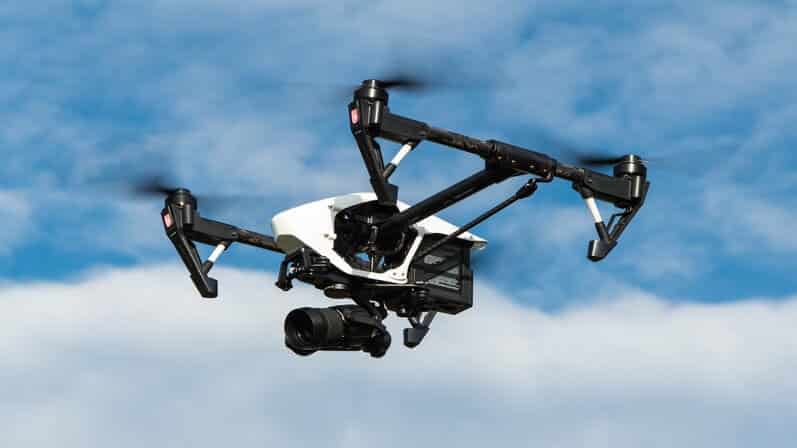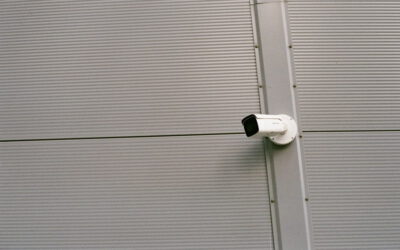How to create a drone for any purpose?

It is necessary to think seriously about the fact that perhaps someday decisions about life and death will be made by devices that are not directly controlled by people. In recent years, the technology of unmanned aerial vehicles has developed rapidly, and the degree of autonomy of the systems is becoming higher. And although, as far as we know, no approved autonomous unmanned complex has yet been put into operation, tests are underway, and this technology is being developed.
How to create a drone for any purpose?
According to the definition approved by the ICAO Assembly, “an unmanned aerial vehicle (drone) is an aircraft without a pilot… that performs a flight without an aircraft commander on board and is either completely remotely controlled from another location from the ground, from another aircraft, from space, or is programmed and completely autonomous.”
Recently, the development of unmanned aerial vehicles (UAVs) has been a dynamically developing direction. Small multirotor-type UAVs are of particular interest due to a number of their inherent features and applications. The main field of application of this type of devices is conducting aerial photography and aerial video shooting, as well as monitoring various environmental parameters using additional equipment on board.
Having a small size, multirotor-type UAVs can fly in conditions of limited space, as well as in places where being in them poses a threat to human life.
The main direction in the development of such UAVs is to increase the flight autonomy, which in turn increases the reliability of the device, provides ease of use without requiring a high level of operator qualification, and also reduces the overall cost of completing the task.
One of the biggest difficulties in developing and approving such a drone technology is that it is extremely difficult to create satisfactory conformity assessment systems that would guarantee the safety of the technology and its ability to function as people. In practice, the creation of such complexly arranged unmanned vehicles involves programming an incredibly large number of combinations of alternative options for actions, which makes it impossible to test and test them to the same extent as controlled aircraft. Some also understand autonomy as “artificial intelligence”, that is, systems that are trained and even independently develop possible options for actions in response to new problems. We have no information that we are close to a breakthrough in this technology, but many are afraid that in fact, we may be close to it.

Autonomous drones, that is, ultra-modern aircraft, whose programs include countless human-defined options of action in order to cope with emerging problems, are already being tested in a number of civilian universities and military research institutions. Tests are being conducted on “groups of drones” (drones that follow and perform tasks set by other drones), which, of course, completely depend on automated information processing. There are also tests of autonomous drones that work together with controlled aircraft, starting with what is called the “Loyal Wingman” (unmanned) aircraft in the US Air Force, and ending with the already well-tested Wide Sea Area Surveillance Complex (BAMS), which includes the Poseidon-8 patrol aircraft of the Navy and the Triton unmanned aerial vehicle. At the same time, further development of unmanned systems launched from controlled aircraft for operation in autonomous mode or as a “prefix” to the “carrier aircraft”is underway. For example, recently there were tests of nano-drones “PERDIX”, during which 100 unmanned vehicles were dropped from the “carrier aircraft” F-18. They were monitored using digital maps, which displayed the coordinates of the devices. The work of such drones involves a greater degree of autonomy. A large number of such developments and plans are well described, for example, in the American planning document USAF RPA Vector – Vision and Enabling Concepts 2013-2038, published in 2014, and other documents and even video materials about such research developments are widely available. The prospects of autonomous technology, whether it is unmanned aerial vehicles, underwater vehicles or other weapons systems, clearly open up new opportunities for the armed forces.
As for the question of creating your own drone with many functions, then you should pay attention to the characteristics of this device. For example, to control production, you can equip your face and gesture recognition drone. And for some special cases, for example, photos or videos in the UAV can even be voice control.

Pros and cons of using drones
To evaluate all the advantages of UAVs, you need to understand where and how they can be used. Today, about 70% of the global drone market is involved in three areas:
- Mapping.
- Diagnostic survey of objects, in particular, pipelines, power lines, highways.
- Assistance in the delivery and detection of opponents in the military sphere.
They are also used for entertainment, including the creation of beautiful photo and video materials, rescue operations. But why did they start to be actively used? Let’s analyze their main advantages:
- A significant advantage of drones is their cross-country ability and transport accessibility – they will fly to those areas where it is problematic to get by land or by plane.
- Reducing the risk of people’s lives by using a drone.
- The maintenance and maintenance of UAVs is cheaper than similar expenses for manned aviation.
- The speed of cargo delivery is another strong argument “for”. A drone flies to a remote point in 30 minutes, and a helicopter – in 2 hours.
- For manned aircraft, it is important to have a huge platform for take-off and landing, while a strip of 500-600 meters is enough for drones to land, and miniature drones can easily land even on the steps near the threshold thanks to the wireless sensor.
- UAVs use fuel economically due to their compact dimensions, which is also an advantage.
At the same time, like any innovative industry, the UAV market faces difficulties that have to be overcome. J’son & Partners Consulting identifies the following barriers to the development of the GPS drone market:
- Insufficiently clear legislation regarding the use of consumer and commercial drones and the prohibition of their free use (licensing) in the airspace;
- The absence in many countries of a modern production base focused on the mass consumer and mass commercial market, which leads to higher costs and an increase in the cost of devices;
- Unmanned vehicles belong to the category of goods whose export from some (and to some) countries is prohibited by law. This problem appeared due to the existence of customs restrictions on the import or export of these devices.
- In addition, there is a risk of creating problems for other participants in air traffic, as well as vehicles, infrastructure and people on the ground.

Development of your own drone
It is difficult to predict the future, but the technological potential of autonomous unmanned aerial vehicles is already being tested and developed. To what extent they will become an important technology for different spheres depends on the needs and legal regulation of countries.
Therefore, in order to take into account all the standards and create your own drone to perform the tasks, you need not only to have experience in developing such solutions but also to know a lot of classifications and laws in various countries. Therefore, in order to achieve better results in a shorter time, it is worth contacting experts in your field.
You can contact us for advice on the development of lidar drone and our hardware development specialists will help you decide exactly what it should be, and orient how much for a drone.
Recent Posts
- What Is an Exoskeleton Suit?
- Where can you use an ultrasonic motor?
- Smart Camera: System That You Can Use for a Wide Variety of Purposes
- Why Is the Smart Toothbrush Better Than a Regular One?
- Microcontrollers: An Integral Part of Embedded Hardware
- Air Quality Monitoring System: Why It’s So Important in Modern Realities





